Picture King Henry VIII of England at dinner. What’s he eating? If you’ve ever gone to a Renaissance Faire, you may have seen royals from this time period hefting a giant roast turkey leg to their faces. But funnily enough, a more historically accurate depiction would have them digging into a heaping plate of sweet potatoes.
Henry VIII was wild for sweet potatoes. And I’m sure how they were prepared was a big factor. According to the Library of Congress, his favorite way was in a “spiced sweet potato pie.” But other popular ways of eating sweet potatoes at the time were “roasted and infused with wine, boiled with prunes, or roasted with oil, vinegar, and salt.”
The sweet potato was way more popular in Europe than the white potato, which arrived with Columbus from the Americas and didn’t catch on until the 1800s. And while we’re on the subject, sweet potatoes are not actually potatoes, and in fact, aren’t related botanically. While I would never diss the potato, the sweet potato is slightly healthier, with a broader range of nutrients and a lower glycemic effect.
But sweet potatoes are, well, sweet. And they’re often turned into desserts like Henry VIII’s favorite spiced pies. But they’re also versatile enough to star in many other types of sweet potato recipes, including savory ones.
So in this article, we’ll look at some of the modern ways to use them in different kinds of recipes — from savory to sweet, simple to sophisticated.
And we’ll cover how to choose, store, and clean sweet potatoes so they’re fresh and tasty when you’re ready to indulge like a king (or queen).
When Are Sweet Potatoes in Season?
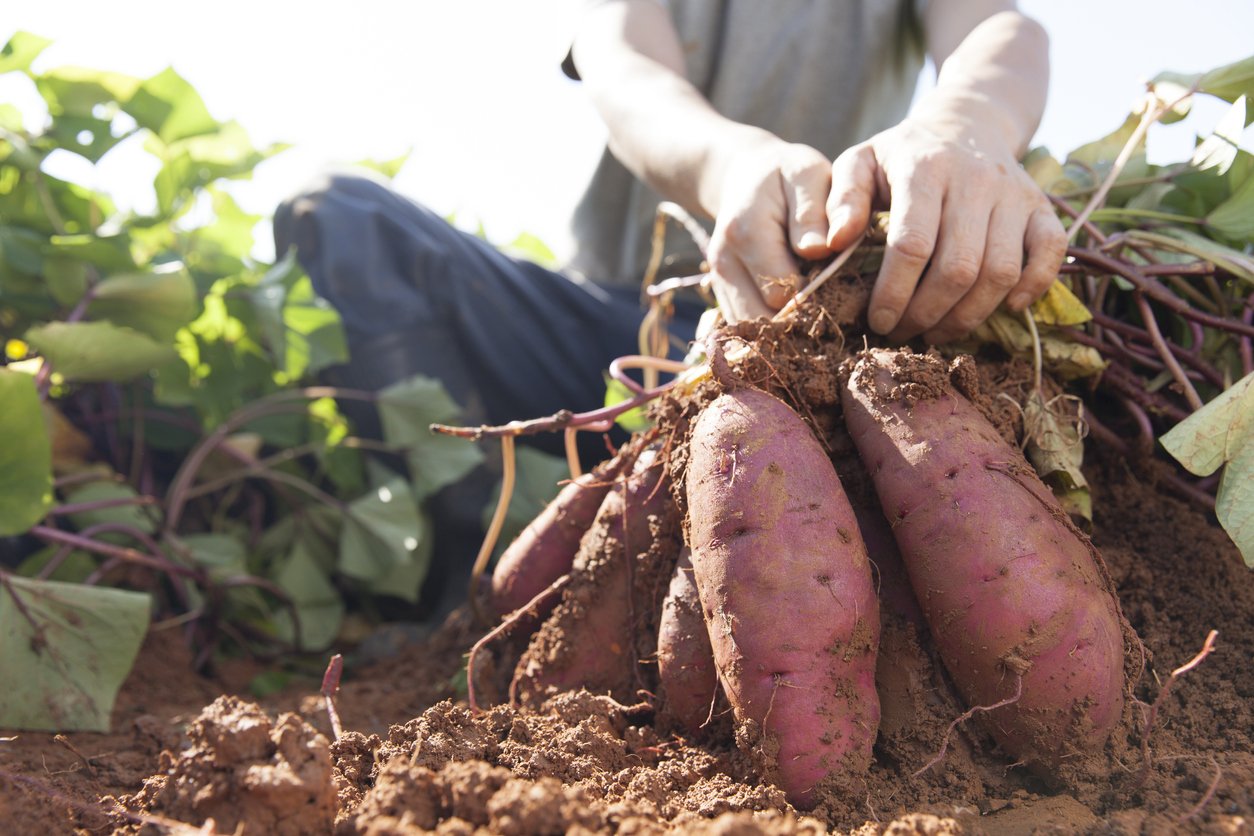
While you can find sweet potatoes year-round in many grocery stores (because they can store well for a long time in the right conditions), they’re typically harvested in the fall. Sweet potatoes take from 100 to 150 days to grow, from sowing to harvest. And planting doesn’t occur until the soil warms up to at least 60°F. Sweet potato slips planted in late spring become ready to harvest in July, and those put in the ground in early summer will be ready to dig out around November.
Some varieties can stay in the ground longer, however. Certain types of Japanese sweet potatoes are in season in the winter months as well.
How to Choose and Store Sweet Potatoes
There are many varieties of sweet potatoes, and they come in colors ranging from white to yellow to orange to purple. And since the colors of whole plant foods are due to particular nutrients, they can be a big help if you want to “eat the rainbow” to get a wide variety of phytochemicals. (Note: Skittles and M&Ms don’t provide this benefit; in fact, they take advantage of the fact that our brains code “colorful” as “nutritionally complete” to get us to overconsume while we wait for all those supposed nutrients to hit our digestive tracts.)
When shopping for sweet potatoes, look for ones with skins that are intact and mostly the same color. They should also be free of bruises, cracks, or signs of sprouting. (And they should also not be made of plastic, with eyes, ears, noses, and mustaches stuck on them — oh, sorry, that’s Mr. Potato Head.) Plus, give them a gentle squeeze all over, to make sure they’re firm and not squishy (which could indicate rotting).
Once you’ve brought your sweet potatoes home, you can keep them on a kitchen countertop at room temperature — as long as you plan to consume them within a week or two.
If you’d like to store them longer, keep them in a cool, dark space like a cellar or pantry. If the ambient temperature is between 55–60°F (12.5–15.5°C) and the relative humidity is high (around 85–90%), sweet potatoes can last from three to six months.
Once you’ve cut or cooked a sweet potato, it can last from three to five days in the fridge, or up to a month in the freezer.
How to Clean Sweet Potatoes
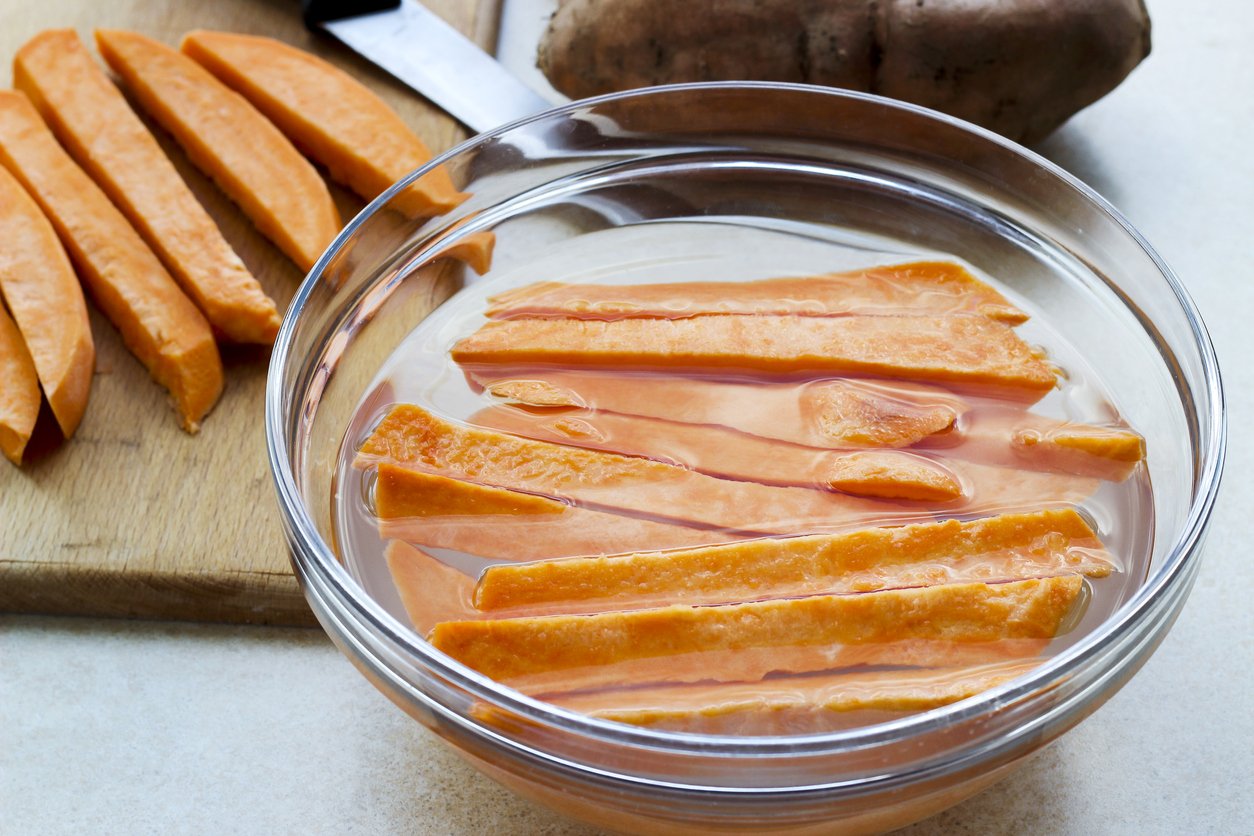
Sweet potatoes are on the EWG’s Clean 15 list, which means they’re among the fifteen plant foods lowest in pesticide residue (although they’re not completely free of it).
The main pesticide used in sweet potato farming is a fungicide found on the skin. This chemical is used to prevent scurf, which isn’t a cross between a neck covering and foam football, but rather a fungal discoloration.
You can significantly lower your exposure to this fungicide by peeling the skin, although you’ll also lose some nutrient concentration. Alternatively, you can soak them in a water and baking soda bath. To avoid mold and rotting due to excess moisture, don’t soak your sweet potatoes until you’re ready to prep and cook them.
Can You Eat Raw Sweet Potatoes?
You can’t eat regular potatoes raw (especially ones with green bits) because they contain a toxic compound called solanine. But sweet potatoes are members of a different family of tubers. They’re related to morning glories, while potatoes go to family reunions with tomatoes, eggplants, and other nightshades. Sweet potatoes and their morning glory relatives do not contain solanine, so they can be eaten raw.
However, sweet potatoes do contain raffinose, which is an oligosaccharide (the O in FODMAPs) that can cause gas, cramps, diarrhea, and nausea. On top of this, the main protein in sweet potatoes, sporamin, inhibits the properties of certain digestive enzymes. This makes it more difficult for some people to digest the proteins found in sweet potatoes, which can also lead to gastrointestinal discomfort.
So while sweet potatoes aren’t toxic and can be eaten raw, they’re easier to digest when cooked. You can also slice them and soak them in water for a few hours. This process removes some of their starch, making them more enjoyable to eat raw and possibly easier to digest.
How to Prepare Sweet Potatoes

Sweet potatoes are nothing like Green Eggs and Ham, except for one thing: You can eat them everywhere (and “everywhen,” a word that I bet Dr. Seuss wished he had thought of). Sweet potato dishes are appropriate for breakfast, lunch, dinner, snacks, and desserts. You can cook them by boiling, baking, stir-frying, grilling, or cooking and mashing.
They’re also commonly deep-fried to make sweet potato fries, but this isn’t a healthy way to consume them. Deep-frying high-carbohydrate foods leads to the formation of acrylamide, a carcinogen, although the amount formed varies by sweet potato variety and frying method. If you like the crispiness of fries, a healthier method is to bake or air fry them, which will still form some acrylamides, but less than deep-frying in oil.
Ultimately, the best way to prepare sweet potatoes is in ways you’ll enjoy them often. And if you can cook and eat them with their skin on, you’ll help retain more antioxidants.
Sweet potatoes are high in carotenoids, namely beta-carotene, which converts into the active form of vitamin A. Because this is a fat-soluble vitamin, be sure to eat sweet potatoes with a healthy source of fat to help your body absorb as much vitamin A as possible.
How do I love sweet potatoes? Let me list the ways. Some of the best ways to eat sweet potatoes are:
- As side dishes baked into strips (fries) or cubes
- Mashed like potatoes
- Baked whole and stuffed with toppings
- In casseroles and chilies
- In desserts and baked goods
- Blended into soups
- In a warm salad
- In grain bowls or power bowls
- As part of a sheet pan meal
Sweet Potato Recipes
Now let’s embark on a culinary adventure that celebrates the remarkable versatility of sweet potatoes. Beyond their natural sweetness and vibrant hue lies a world of gastronomic possibilities.
From hearty soups and comforting chilies to innovative salads and tempting desserts, we’ve crafted an array of recipes that will transform your sweet potato experience. Whether you’re a novice in the kitchen or a seasoned chef, these sweet potato recipes are designed to inspire and delight, proving that sweet potatoes are not just a side dish but a star ingredient in their own right.
So, sharpen your knives, fire up your stovetop, and get ready to discover the endless culinary wonders of sweet potatoes. Let the cooking begin!
1. Smoky Sweet Potato and Lentil Hash

Regular potatoes are tasty and healthy, but adding sweet potatoes to our Smoky Sweet Potato and Lentil Hash takes it to a whole new level! This sweet potato dish isn’t just comforting and full of flavor; it’s also incredibly nutritious. Imagine starting your day with a hearty bowl of savory sweet potatoes. It’s like a warm hug for your taste buds — and your soul. Plus, sweet potatoes have this magical way of making us feel happy. That’s why we believe this recipe is a fantastic way to celebrate the incredible nutrition that sweet potatoes bring to the table. So go ahead and indulge in this delightful dish anytime. It’s a true mealtime superstar!
2. Sweet and Savory African Peanut Soup

Sweet potatoes add the perfect amount of natural sweetness to this creamy, nutty, and nourishing soup. With an assortment of healing spices, protein-packed chickpeas, leafy green spinach, and lots of peanut butter, this Sweet and Savory African Peanut Soup is a scrumptious treat, hot or cold. The tender cubes of sweet potato also add gorgeous color to the stew, which makes it even more exciting to enjoy. After all, we eat first with our eyes! Enjoy this hearty sweet potato recipe as an appetizer or entree for lunch or dinner.
3. Sweet Potato, Lentil, and Arugula Salad
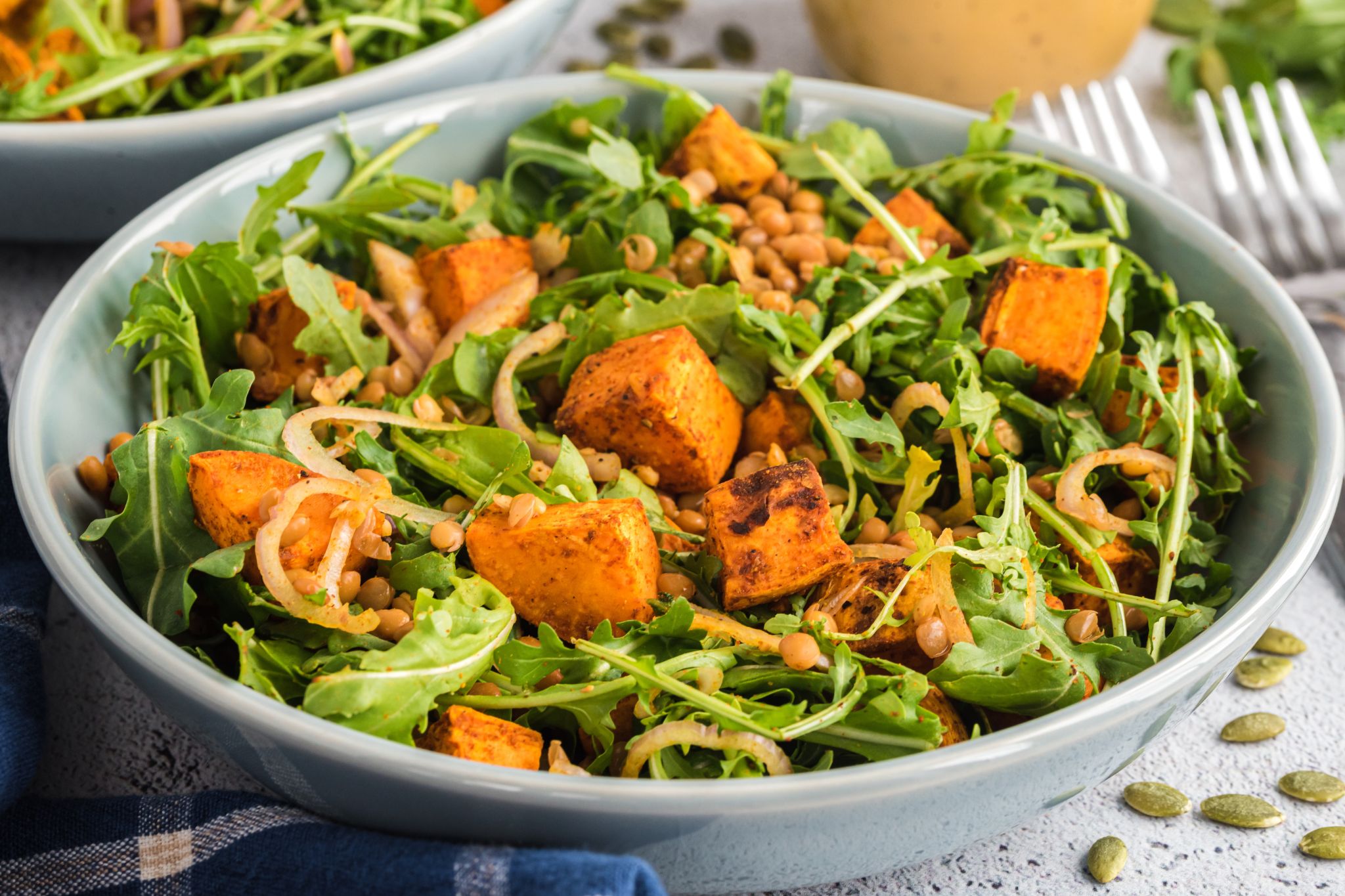
Sweet Potato, Lentil, and Arugula Salad is a light and tasty way to enjoy sweet potatoes. And best of all, it’s ready in under 30 minutes! Peppery arugula and earthy lentils are the perfect complement to the smooth texture and natural sweetness of the sweet potato. This salad is the perfect go-to when you have extra sweet potatoes you’d like to use up, or you simply want to enjoy your daily sweet potato fix.
4. Buckwheat Sweet Potato Chili

Sweet potatoes are wonderfully versatile and an excellent addition to many savory (or sweet!) dishes — including this tasty Buckwheat Sweet Potato Chili! This chili is a comforting bowl of deliciousness that is packed with tons of nutrition: protein thanks to the buckwheat and black beans, and plenty of beta-carotene, B6, potassium, fiber, and vitamin C from the sweet potato. Buckwheat and sweet potato are a truly harmonious duo — so much so that you’ll be thinking up new ways to enjoy this delightful pairing again and again!
5. Southwest Stuffed Sweet Potatoes
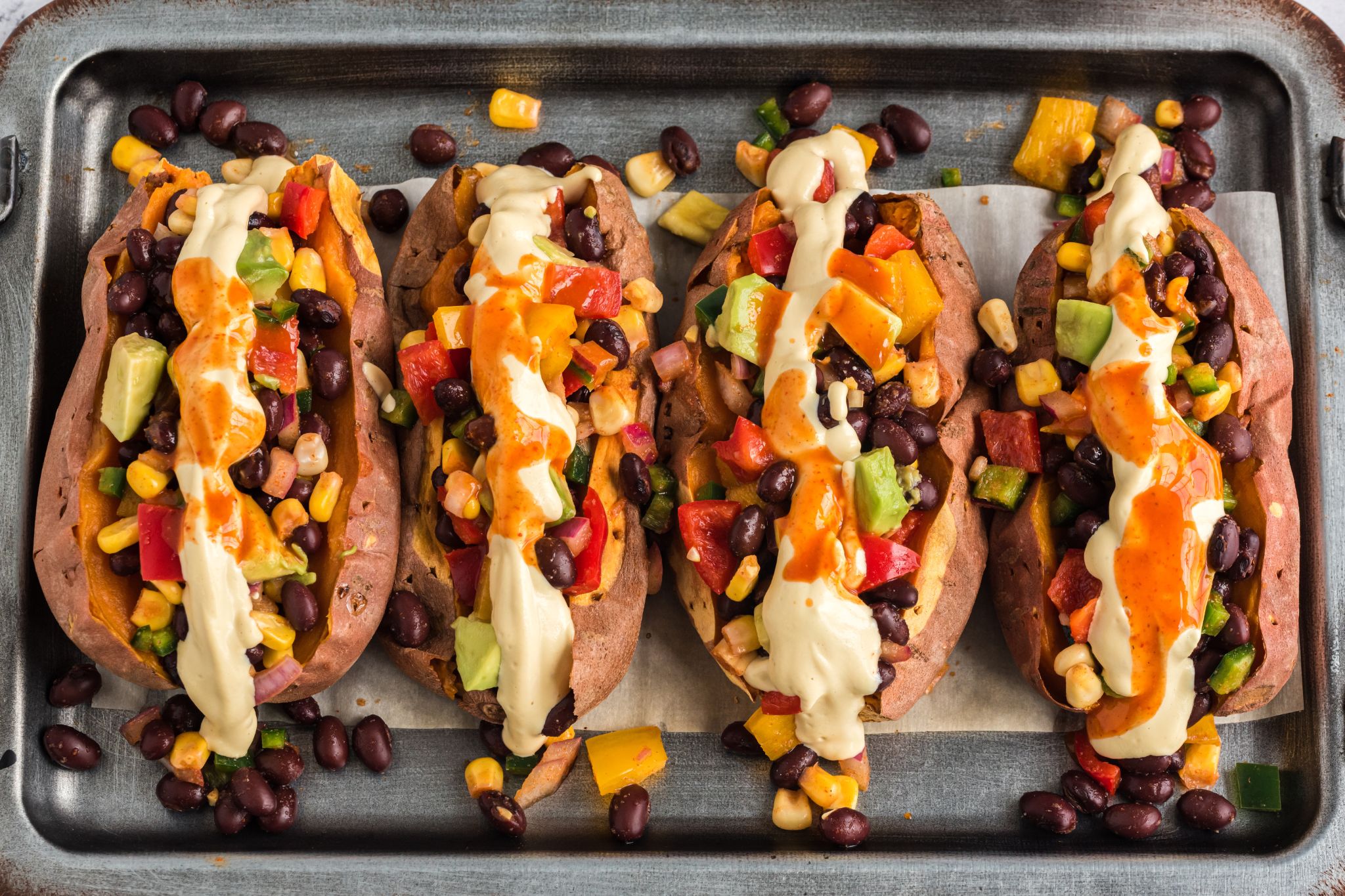
Southwest Stuffed Sweet Potatoes reign supreme when it comes to a fun, filling, and delicious way to enjoy sweet potatoes. These naturally sweet orange beauties are packed with carotenoids and fiber. Plus we can’t forget the protein-packed and phytonutrient-rich black bean and sweet corn medley, delightfully creamy avocado, and flavorful herbs and spices. If you’re striving to center your diet around consuming nutrient-dense foods, this sweet potato recipe certainly will help get you there!
6. Sweet Potato Gnocchi
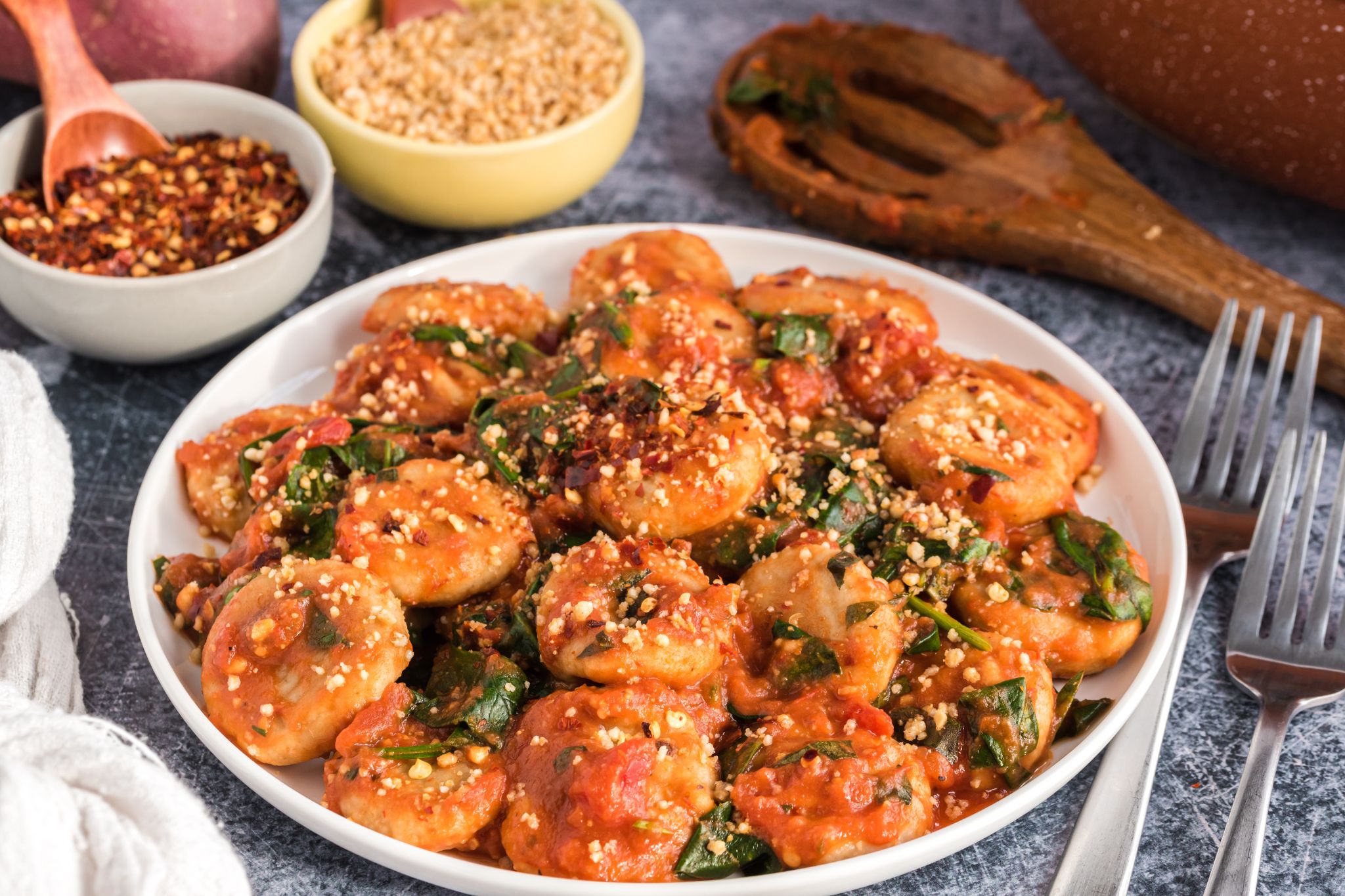
Gnocchi just got much sweeter (and nourishing) thanks to the addition of sweet potato. These gnocchi are just as soft and pillowy as their traditional counterparts — with just a little more sweetness. What’s more, the sweet potato makes this gnocchi glow with a bright orange hue that is even more stunning when paired with your favorite green veggies and pasta sauce!
7. Sweet Potato Pie Mousse
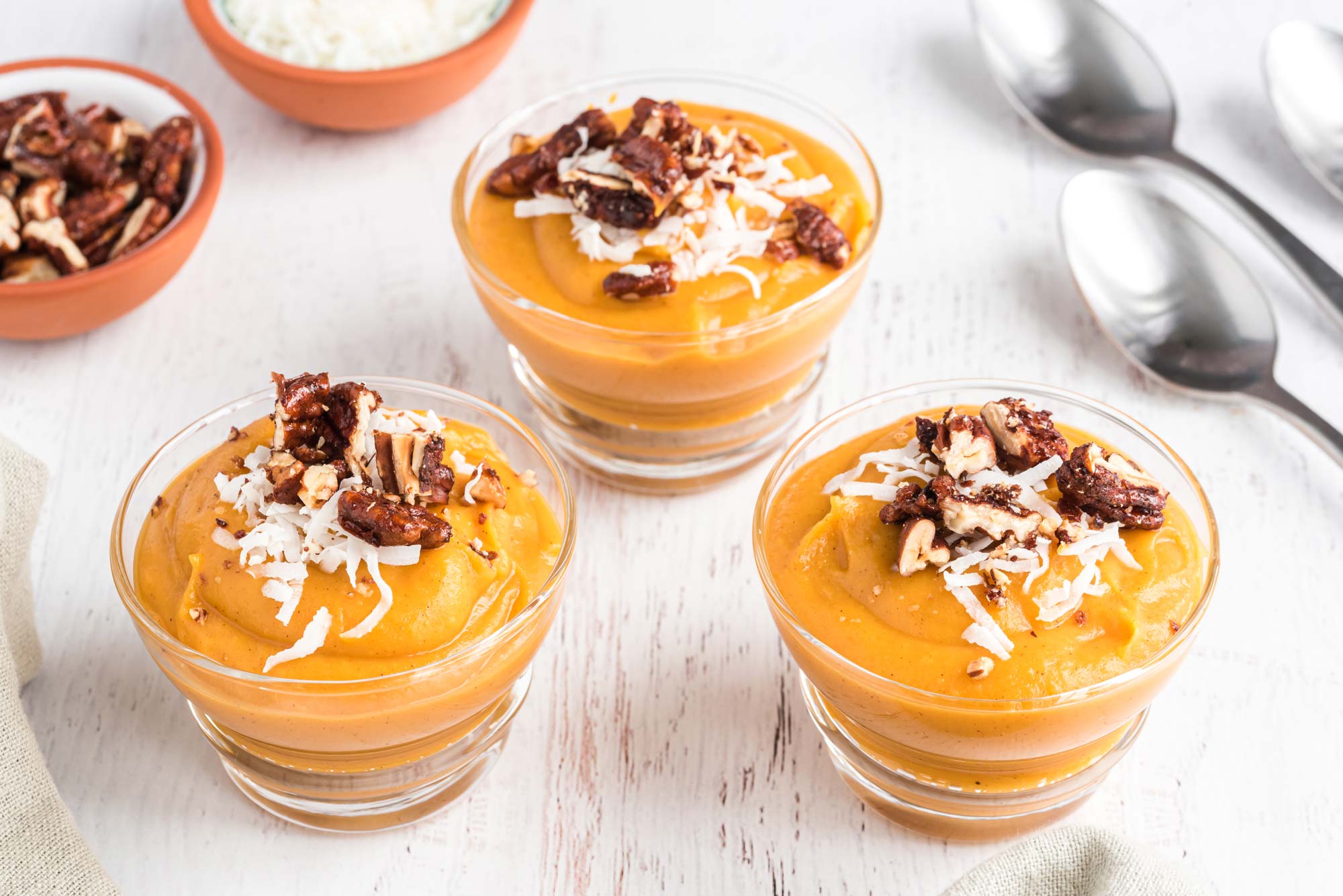
Unlock sweet potatoes’ naturally decadent side with this silky Sweet Potato Pie Mousse. Sweet potatoes, dates, and coconut milk come together to make a lightly sweet, whipped mousse with some autumn spice that will make anyone who eats it swoon. Double the recipe to make a scrumptious sweet potato pie filling!
Enjoy Sweet Potatoes Anytime, Anywhere
As one of the oldest cultivated vegetables, sweet potatoes have firmly established their place in culinary tradition. Not only are they a nutritional powerhouse, but they also thrive in various recipes, from savory to sweet, breakfast to dessert.
Knowing when and how to choose, store, and prepare sweet potatoes ensures your full enjoyment of them. And whether enjoyed as a side dish, main course, or incorporated into desserts, sweet potatoes have proven their culinary adaptability. Take time to embrace the versatility and deliciousness of sweet potatoes when crafting your next meal.
Tell us in the comments:
-
What’s your favorite way to eat sweet potatoes?
-
Do you have any traditional sweet potato dishes in your family history or cultural heritage?
-
Which sweet potato recipe will you try next?
iStock.com/Ika Rahma



